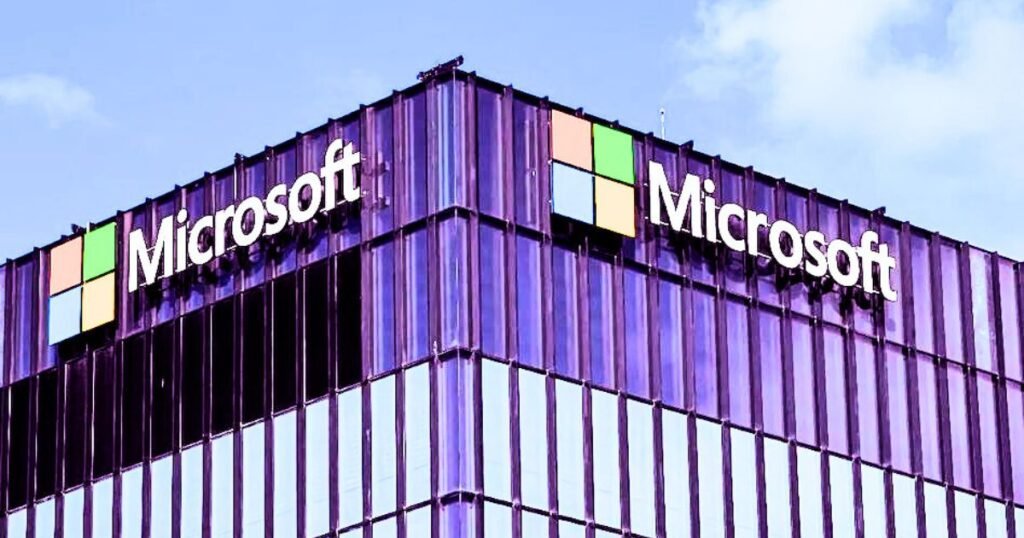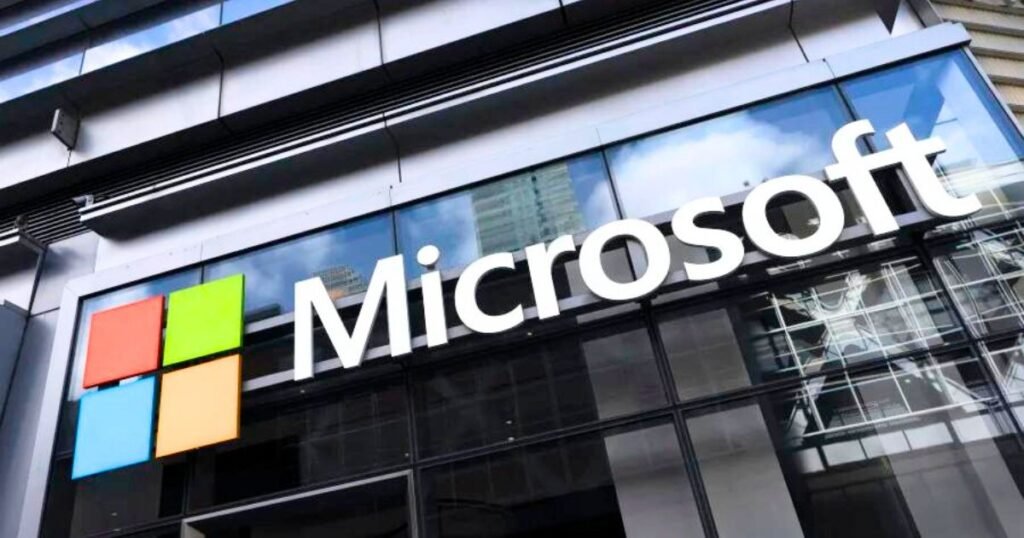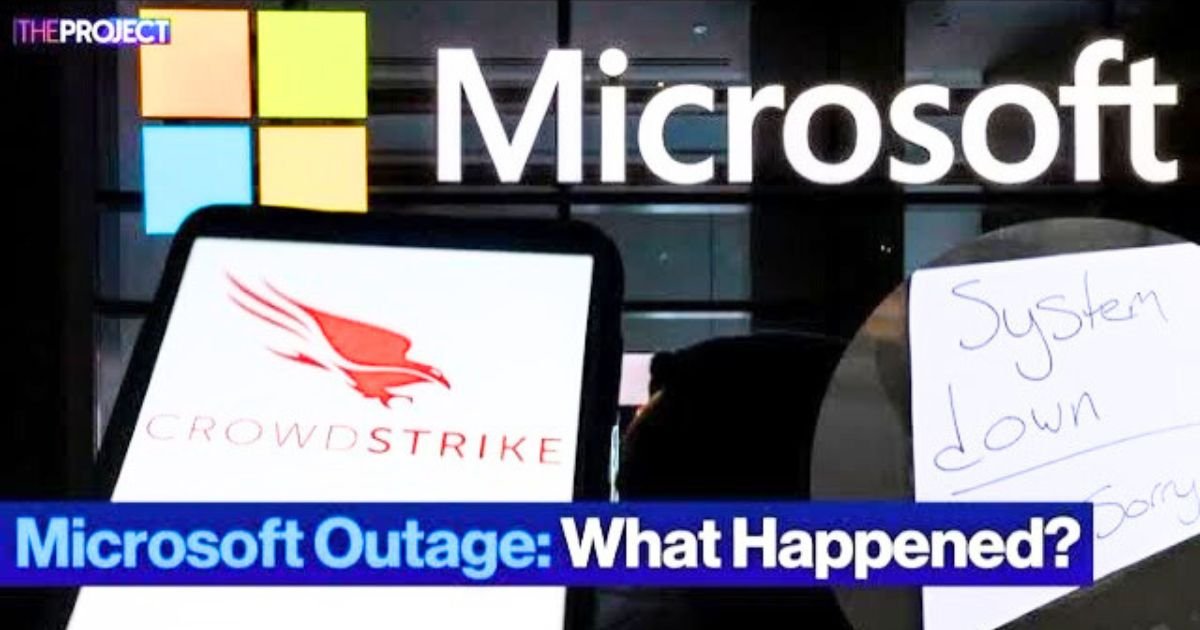Once hailed as a revolution fostering seamless connectivity, the internet sputtered and stalled on [19-07-24]. A global tech outage triggered by a seemingly innocuous software update sent shockwaves worldwide. Businesses ground to a halt, flights were grounded, and anxieties soared as critical systems faltered. While initial concerns pointed towards a malicious cyberattack, the culprit turned out to be a much less nefarious but equally disruptive source: a faulty update from a cybersecurity firm.
This article delves into the intricate details of the Microsoft outage News, exploring its cause, the domino effect it triggered, and the broader implications for our tech-reliant world. We’ll also address lingering questions and offer insights to help you prepare for potential future disruptions.
Anatomy of the Microsoft Outage News: A Faulty Firewall and a Chain Reaction

The story begins with Microsoft, a name synonymous with personal computers. Millions of devices globally run on Microsoft’s Windows operating system. Microsoft relies on software from leading cybersecurity companies, including CrowdStrike, to bolster security. On the fateful day, CrowdStrike released a routine update for its antivirus software deployed on Windows machines. Unbeknownst to them, this update harboured a hidden bug.
This seemingly minor glitch, however, had a cascading effect. The faulty CrowdStrike update triggered system errors within Windows, causing computers to malfunction and critical services to buckle. The dominoes began to fall:
- IT Outage: Businesses of all sizes, from mom-and-pop shops to multinational corporations, experienced disruptions to their IT infrastructure. Applications became inaccessible, emails went undelivered, and internal communication channels went dark.
- Computer Outage: Individual users faced the frustration of unresponsive computers, blue screen errors, and unexpected shutdowns. This was particularly disruptive for those working remotely or relying on their devices for essential tasks.
- Windows Outage: Windows, the backbone of countless computing systems, became unreliable. This wasn’t just a personal inconvenience; it impacted everything from point-of-sale systems at retail stores to critical medical equipment in hospitals.
Global IT Outage: The impact transcended national borders. Businesses and individuals worldwide felt the sting of the outage, highlighting the interconnectedness of our digital age.
Read More: News Plus Globe
Beyond Blue Screens: Real-World Consequences
The ramifications of the Microsoft outage News stretched far beyond technical glitches. Here’s a closer look at the tangible effects it caused:
- Airlines Grounded: Air travel stopped as airlines grappled with non-functional check-in and booking systems. Thousands of flights were cancelled or delayed, stranding passengers and disrupting travel plans.
- Flights Grounded: The aviation industry, already grappling with post-pandemic recovery, took a significant hit due to the outage. Airlines faced financial losses, passenger frustration mounted, and the domino effect impacted travel itineraries.
- Financial Disruption: Stock exchanges experienced hiccups, banks faced issues with online transactions, and overall financial operations were hampered. This caused market anxiety and highlighted financial systems’ vulnerability to tech disruptions.
- Healthcare Hiccups: Hospitals and medical facilities were not spared. Appointment systems went haywire, access to patient records became limited, and some non-critical surgeries were postponed. This underscored the importance of robust backup systems in healthcare institutions.
The outage was a stark reminder of our dependence on technology and the potential consequences of even minor glitches in the intricate web of software and hardware that powers our world.
CrowdStrike Stock and the Tech Fallout: Market Jitters and Repercussions

The CrowdStrike outage also sent ripples through the tech stock market. CrowdStrike’s stock price dipped immediately, reflecting investor concerns about the potential impact on the company’s reputation and future sales. However, the company’s swift response and assurances about resolving the issue helped stabilize the stock price.
This episode highlighted the tech sector’s interconnectedness. When a major player like CrowdStrike experiences a hiccup, the entire ecosystem feels the tremors. It also raised questions about software developers’ rigorous testing procedures and the need for stricter quality control measures.
Was it a Cyberattack? Dispelling Myths and Understanding What Happened
In the initial hours of the outage, fears of a coordinated cyberattack ran rampant. Headlines blared about a “Microsoft outage today” caused by malicious actors. However, Microsoft and CrowdStrike quickly dispelled these fears.
The outage was not a result of a cyberattack but rather a technical malfunction within a software update. This distinction is crucial. While cyberattacks are a constant threat in the digital landscape, this incident was an unfortunate case of human error.
Microsoft Outage Today: A Resolved Crisis, But Lingering Concerns

Thankfully, the Microsoft outage was a short-lived crisis. Microsoft and CrowdStrike worked diligently to identify the root cause and release a patch addressing the faulty update. Within a day, normal operations for most users and businesses had resumed.
However, the outage left a trail of lingering concerns that deserve our attention:
- Software Update Reliability: The incident underscores the critical need for robust testing procedures during software development. A single bug in a seemingly minor update can have a cascading effect, causing widespread disruption.
- Cybersecurity Reliance: The outage exposed our dependence on cybersecurity companies like CrowdStrike to keep our systems safe. This incident highlights the importance of these companies having top-notch security solutions and rigorous internal quality checks.
- Business Continuity Planning: The outage caught many businesses off guard, highlighting the importance of having robust business continuity plans (BCPs) in place. BCPs should outline how to maintain essential operations during IT disruptions, minimizing downtime and financial losses.
- Individual User Preparedness: While individual users may not have been able to prevent the outage, there are steps they can take to be more prepared for future disruptions. Regularly backing up critical data and having alternative communication methods readily available can help mitigate the impact of IT outages.
The Microsoft outage served as a wake-up call. It exposed vulnerabilities in our tech infrastructure and highlighted the need for better preparedness. We can build a more resilient and reliable digital ecosystem by addressing these concerns and implementing more robust solutions.
Moving Forward: Building a More Resilient Digital Future
The global tech outage triggered by the Microsoft and CrowdStrike issues is a valuable learning experience. Here are some key takeaways to build a more resilient digital future:
- Investing in Robust Testing: Software developers must prioritize thorough testing procedures before releasing updates. This includes rigorous simulations to identify and address potential bugs before they reach real-world users.
- Transparency and Collaboration: Prompt and transparent communication from tech companies is crucial during outages. Users and businesses need clear information about the situation and its resolution timeline to minimize disruption. Collaboration between tech giants and cybersecurity firms can also foster more robust and standardized testing practices.
- BCP for All: Business Continuity Planning (BCP) should no longer be an optional luxury. Businesses of all sizes should develop BCPs tailored to their specific needs. This ensures they can adapt and maintain operational continuity during unforeseen disruptions.
- Individual User Awareness: While individual users may not be able to prevent outages, they can take steps to minimize their impact. Regularly backing up data, having offline access to critical information, and practising alternative communication methods are all valuable steps towards personal tech resilience.
By learning from this incident and implementing these recommendations, we can build a more resilient digital infrastructure better equipped to handle even the most unexpected challenges.
Although the Microsoft outage may be over, its legacy can catalyze positive change within the tech industry. By prioritizing robust testing, fostering collaboration, and empowering users with preparedness strategies, we can create a more reliable and resilient digital future for all.
Beyond the Headlines: Exploring the Unseen Impacts of the Microsoft Outage

The narrative surrounding the Microsoft outage has primarily focused on the immediate disruptions it caused – grounded flights, frustrated businesses, and a temporary halt to daily activities. However, the incident’s impact extends far beyond the headlines. Here, we delve into some of the unseen consequences that deserve consideration:
- Erosion of Trust: The outage eroded trust in the tech industry, particularly with companies like Microsoft and CrowdStrike. Businesses and individuals alike may need more time to rely on their software solutions in the future, raising concerns about long-term brand reputation.
- Innovation Chill: The incident could lead to a “chill” in the tech innovation landscape. Companies, fearing similar disruptive consequences, might become more cautious about rolling out new features and updates, potentially hindering technological advancements.
- The Hidden Costs: Beyond the apparent financial losses incurred by businesses during the outage, hidden costs exist. Lost productivity, reputational damage, and the strain on customer service channels all contribute to the overall economic impact, which may take time to quantify.
- Mental Health Toll: The outage, while temporary, could hurt the mental health of some individuals. The sudden disconnect from work, communication channels, and access to information can cause anxiety and stress, particularly for those heavily reliant on technology.
- A Wake-up Call for Regulators: The incident serves as a wake-up call for regulatory bodies overseeing the tech sector. Stronger regulations around software testing procedures and data security measures could be implemented to prevent similar large-scale disruptions in the future.
These unseen impacts highlight the multifaceted nature of tech outages. They involve not just immediate inconveniences but the ripple effects that can impact trust, innovation, and even mental well-being.
A Global Conversation: Lessons Learned and the Road Ahead
The Microsoft outage sparked a global conversation about our dependence on technology and the vulnerabilities within the digital ecosystem. This dialogue needs to continue, fostering collaboration and knowledge sharing across various stakeholders:
- Tech Companies: Tech giants like Microsoft and CrowdStrike are responsible for learning from this incident. This involves prioritizing robust testing procedures, fostering transparency during outages, and collaborating with cybersecurity companies to establish best practices.
- Cybersecurity Firms: Cybersecurity firms are critical in safeguarding our digital infrastructure. They must invest in rigorous internal testing and quality control measures to ensure their software updates don’t inadvertently create vulnerabilities.
- Governments and Regulators: Governments and regulatory bodies have a crucial role in establishing stricter regulations around software testing and data security. This can help mitigate the risks associated with large-scale tech outages.
- Individual Users: Individual users can contribute to a more resilient digital ecosystem by practising personal tech hygiene. This includes regularly backing up data, staying informed about potential threats, and diversifying communication methods to minimize disruption during outages.
By fostering a collaborative approach involving all stakeholders, we can leverage the lessons learned from the Microsoft outage to build a more robust and resilient digital future. This future prioritizes reliability, transparency, and user preparedness, ensuring that technology continues to empower us without creating undue vulnerabilities.
Conclusion
In conclusion, the Microsoft outage may be a recent event, but its impact will likely be felt for some time. By acknowledging the unseen consequences, fostering a global conversation, and implementing collaborative solutions, we can translate this incident into a catalyst for positive change. Let us strive towards a digital future where technology empowers us, not disrupts us.
Microsoft Outage FAQs: Decoding the Disruption
1. What caused the Microsoft outage?
A faulty update from CrowdStrike, a cybersecurity company using software on Microsoft Windows devices, triggered the outage.
2. Was the Microsoft outage a cyberattack?
No. While initial concerns pointed towards a cyberattack, it was a technical error within the CrowdStrike update.
3. What caused the main disruptions during the outage?
A: There are some main caused are discuss it.
- IT outages in businesses, hindering operations.
- Computer malfunctions and blue screens for individual users.
- Grounded flights due to non-functional airline systems.
- Disruptions in financial transactions and stock exchanges.
4. How long did the Microsoft outage last?
A: The significant disruption lasted for a day. However, some residual effects might have lingered for a short while.
5. What is the impact on Microsoft Stock and CrowdStrike Stock?
A: Both stocks experienced a dip in the immediate aftermath but recovered as the outage was resolved.
6. What should businesses do to prepare for future outages?
Develop a Business Continuity Plan (BCP) outlining alternative methods to maintain essential operations during IT disruptions.
7. How can individual users be more prepared for tech outages?
Regularly back up critical data and have alternative communication methods readily available (offline documents, phone numbers, etc.).
8. What are some of the unseen consequences of the outage?
- Erosion of trust in tech companies like Microsoft and CrowdStrike.
- Potential “innovation chill” due to companies becoming more cautious about updates.
- Hidden costs for businesses beyond immediate losses, like reputational damage.
- The mental health toll for some individuals is due to sudden disconnection from technology.
9. What role do tech companies like Microsoft play in preventing future outages?
Prioritize robust testing procedures for software updates and ensure transparency during disruptions.
10. What is the responsibility of cybersecurity firms like CrowdStrike?
Invest in rigorous internal testing and quality control measures to prevent vulnerabilities in their software.
11. How can governments and regulators contribute to a more resilient digital ecosystem?
Implement stricter software testing and data security regulations to mitigate risks of large-scale outages.
12. What are some best practices for software development to prevent similar issues?
- Thorough testing simulations before releasing updates.
- Utilizing multiple testing environments to identify potential bugs.
- Encouraging open communication and collaboration among developers and testers.
13. How can we ensure better communication during future outages?
Tech companies should prioritize prompt and transparent communication, providing clear information about the situation and its resolution timeline.
14. What is the role of independent tech reviewers in preventing outages?
Independent reviewers can offer a valuable outside perspective during the testing phase, potentially identifying vulnerabilities internal teams might miss.
15. Should users consider alternative operating systems to minimize dependence on Microsoft Windows?
While alternative operating systems exist, they may only be suitable for some. It can be more practical to focus on diversifying software choices and practicing good data hygiene.
16. How can the tech industry foster a culture of learning from past mistakes?
Openly sharing post-mortem analysis of incidents like the Microsoft outage can help the industry identify common pitfalls and develop better prevention strategies.
17. What are some potential long-term effects of the outage on cybersecurity practices?
The incident might lead to stricter industry standards for software development, and cybersecurity firms could face increased scrutiny.
18. Will this outage impact the adoption of cloud-based technologies?
While the outage might raise concerns about cloud security, it’s unlikely to impact cloud adoption in the long run significantly.
19. What emerging technologies could help build a more resilient digital infrastructure?
Blockchain and decentralized computing could offer more distributed and secure alternatives to centralized systems.
20. How can we balance innovation and stability in the tech industry?
Finding the right balance involves encouraging innovation while implementing robust testing and safety measures to minimize the risk of disruptive outages.




